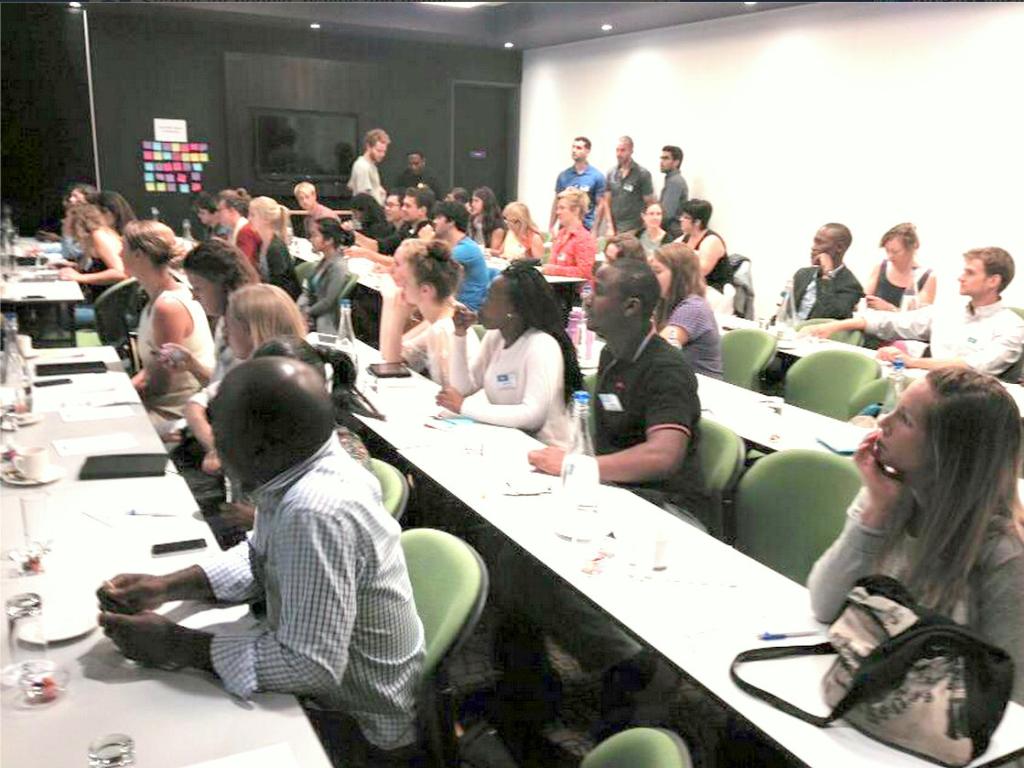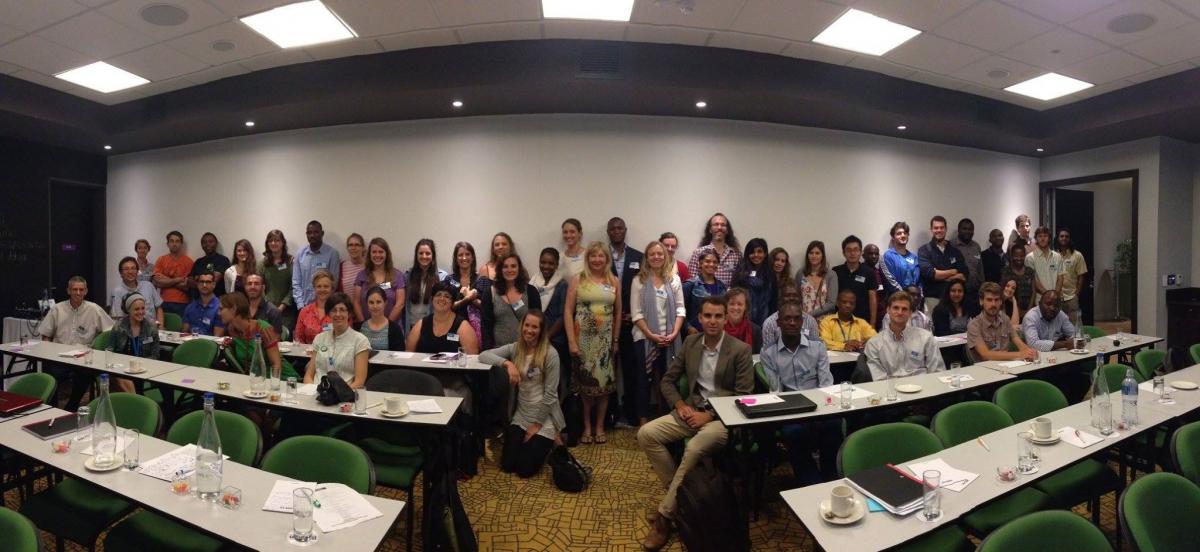African Climate and Development Initiative’s (ACDI) Climate Change & Development Student Conference

African Climate and Development Initiativeâs (ACDI) Climate Change & Development Student Conference
4 March 2015
By Katrine Claassens
The African Climate and Development Initiativeâs first Student Conference on Climate Change and Development was held in Cape Town on the 4th of March, 2015. The well-attended conference was successful in both promoting student research in the field of climate change and developing networks between delegates. True to the ACDIâs Afro-centric and interdisciplinary values, attendees and presenters came from a wide range of disciplinary backgrounds
The opening talks at the conference were presented by Professor Mark New (Pro Vice-Chancellor and Director of the ACDI) and Professor Harald Winkler, Director of the Energy Research Centre. As an appropriate introduction, Professors New and Winkler set the scene for the three succeeding sessions throughout the day: Impacts & Adaptation; Vulnerability & Adaptation; and Sustainability & Mitigation.
Impacts & Adaptation
The presenters of the first session were Marc Burnman, Rebecca Karpul, Monica Giermek and Kristen Kennedy. Burnman spoke on vulnerable bird species, underlining the importance of citizen science data contribution in monitoring responses to climate change. Karpul, in a study on Fynbos, asked whether wind is an important driver of transpiration. Continuing the focus on the Western Cape, Giermek highlighted the significant role wetlands have in reducing the peak flow of short flooding events in her case-study of Cape Townâs Liesbeek River and Valkenberg wetland. Kennedyâs fascinating talk on her masterâs thesis Food and Farming in a Rapidly Changing World: A case Study from the Eastern Cape stressed the importance of understanding the workings of smallholder famersâ complex agri-food systems. Interspersed with interesting anecdotes from interviewees, Kennedy articulated the competition that traditional (and often more resilient) crops face in the instances of cheaper, more convenient food sources.
Vulnerability & Adaptation
Drawing the focus to more marginalized societies, the second session commenced with talks by John Isunju and James Howard. Isunju focused on the vulnerability of Ugandan communities living in wetlands near Kampala. He established links between poverty and vulnerability pointing out in his findings that wealthier households were less exposed to the risk of flooding. Howardâs talk investigated the social vulnerability coastal communities face because of climate change, while Anna Taylor directed us to more urban environments, presenting her PhD research concerning climate impacts as a useful informant of adaptation and decision making within the City of Cape Town. Katrine Claassens, the final speaker for session two, looked at the role of visual representations of climate change, arguing that the images associated with climate change are an important and potentially useful (or destructive) tool for education and action on climate change.
Sustainability & Mitigation
Session three began with a presentation by Reviva Hasson of the UCT School of Economics whose research concerns the developmental challenges of unemployment and climate change in South Africa. She identified corporations that are particularly energy-intensive and thus vulnerable to any energy supply and price fluxes. Claire Pengelly, studying in the field of Development Economics, pointed out the importance of climate finance as a tool for meeting the challenges of climate change. She noted the disparities in the access to climate finance between Africa and Asia, with Africa receiving fewer resources. Pengelly proposed that bettering this state of affairs and improving âClimate Finance Readinessâ would require more effective use of current financing sources in combination with new sources of climate finance. Paul Hoekman presented on another aspect related to economics and energy, applying Material Flow Analysis, an evaluation method which has mostly been used in the Global North, to material flows in Cape Town. Despite the challenges faced in his research, Hoekman was able to understand the feasibility of undertaking a material flow analysis and explore the potential for comparing Cape Town with other cities by considering domestic extraction, harbor imports and exports and domestic processed outputs.
Carolyn McGibbon, from Department of Information Systems at UCT, asked how academic communities could be motivated to reduce electricity consumption through smart buildings using UCT for her case study. She pointed out that 80% of the universityâs carbon footprint came from electricity consumption, 33% of which was inefficiently used. McGibbon concluded that smart buildings offer a significant opportunity for reducing the universityâs carbon footprint. McGibbon aims to explore âhow behavioral change relating to carbon foot printing can be embedded into Information Systems curriculaâ; in order to contribute to UCT becoming a living laboratory for green infrastructure. Also looking at potential of buildings for reducing carbon emissions was Pieter Krog, a Masters student with the Energy Research Centre. Krog noted that buildings are one of the highest energy consumers in South Africa and that if subsidized housing employed measures to reduce carbon emissions, there was the potential to reduce total CO2 emissions in residential sector by a substantial 30%.
Posters
Accompanying the wide range of presentation topics discussed, were posters on display, by Katrine Claassens, Myra Naik and Albert Somanje. Claassensâ poster, recently presented at Norwayâs Arctic Frontierâs conference, queried the wisdom of the extensive use of the Arctic in the communication of climate change. Naikâs poster looked at the potential of forestation to mitigate climate change in Southern Africa, demonstrating that forestation changes could create unintended results. Her research used applied regional climate models to stimulate present-day and future climates with and without forestation. The models showed that forestation could actually enhance warming over some areas while reducing it in others.

Image: Graphic representation of the potential impact of forestation, adapted from a poster by Naik on the topic.
Somanjeâs focus was also Southern Africa, with a case study on small-scale agriculture operations in Zambia. Somanje found that small-scale farmers (the primary agricultural producers of staples crops in developing countries), depend highly on seasonal rainfall and are thus extremely vulnerable to climate change. Without corrective adaption measures the negative impacts on climate change already apparent in Zambia are likely to worsen. Somanje proposes Conservation Agriculture to meet some of major challenges that face farmers in developing countries.
A plenary session concluded the conference which is hopefully to become an annual event, showcasing the innovation and diversity of student research into climate change.

Image credits: Ruchtzwergâs World, Myra Naik, Alicia Okeyo